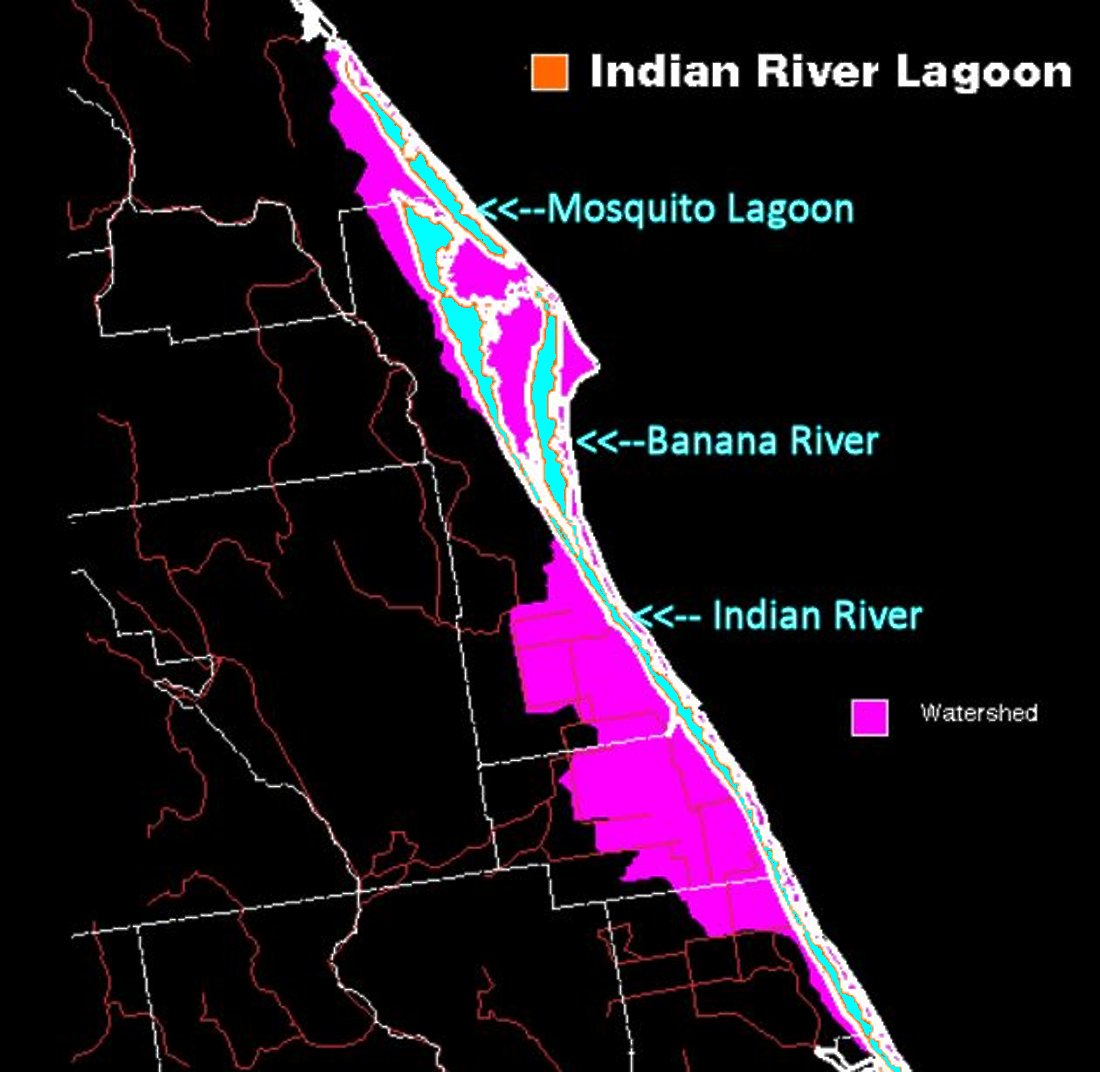|
INDIAN RIVER LAGOON.
(Indian River
Lagoon is a grouping of 3 lagoons: Mosquito Lagoon, Banana
River, and the Indian River. It was originally named
Rio de Ais after the Ais Indian tribe).
LOSS OF
WETLANDS,
AND INCREASED WATERSHED.
From 1913 to 2013, activity by humans has
increased the
Watershed for the
lagoon from 572,000 acres (231,000 ha) to 1,400,000 acres (570,000 ha)
increasing runoff of freshwater and nutrients from farms. Both have been
detrimental to lagoon health. The wetlands are needed to cleanse the lagoon.
About 40,000 acres (16,000 ha) of land were lost to mosquito control and
have been restored, but by 2013, recovery was incomplete.
Mangroves
are important to marine life. Between the 1940s and
2013, 85% of them had been removed for housing development. From
1989 to 2013, the population along the lagoon increased 50% to 1.6
million people.
Sea grass
is a critical component to the overall health of the lagoon. By 1990, it had
surpassed levels reached in 1943. In 1990, the Florida
Legislature passed the Indian River Lagoon Act, requiring most sewer plants to
stop discharging into the lagoon by 1996. Some sports fish rebounded in
population in the 1990s when gill nets were banned and pollution in the lagoon
was reduced. In 1995 the sea grass covered over 100,000 acres (40,000 ha).
In 2007, concerns were raised about the future of the lagoon
system, especially in the southern half where frequent freshwater
discharges seriously threatened water quality, decreasing the salinity
needed by many fish species, and have contributed to large algae blooms
promoted by water saturated with plant fertilizers. In the mid 1990's,
the lagoon has been the subject of research on light penetration for
photosynthesis in submerged aquatic vegetation.
In 2010,
3,300,000 pounds (1,500,000 kg) of nitrogen
and 475,000 pounds (215,000 kg) of
phosphorus entered the lagoon.
In 2011,
a super bloom of phytoplankton resulted in the loss of 32,000
acres (13,000 ha) of lagoon sea grass.
In 2012,
a brown tide bloom fouled the northern lagoon. The county has
approval for funds to investigate these unusual blooms to see if they can be
prevented.
Catches of blue crabs dropped unevenly from
4,265,063 pounds (1,934,600 kg) in 1987 to
389,795 pounds (176,808 kg) in 2012,
but with high catches in 1998, 1991, alternating with low catch years. These
crabs require 2% salt content in the water to survive. A drought
increases the salt content and heavy rainfall decreases it. Both of these
conditions have recurred over the past decades and are believed to have had an
adverse affect on the crab population.
In 2013,
algae blooms and loss of sea grass destroyed all gains. In 2013, four major
problems with lagoon water quality were identified.
1) Excess nitrogen and phosphorus from runoff (application
of fertilizers.)
2) An estimated 8 to 11% septic tank failures of tens of thousands
of septic tanks in the county.
3) Muck from construction, farming, erosion and dead plants
find their way to the bottom of the lagoon, preventing growth and consuming
vital oxygen essential to marine flora and fauna.
4) Invasive species, including the Asian green mussel,
South American charru mussel, and the Australian spotted jellyfish,
eat clams and fish larvae.
|
 |